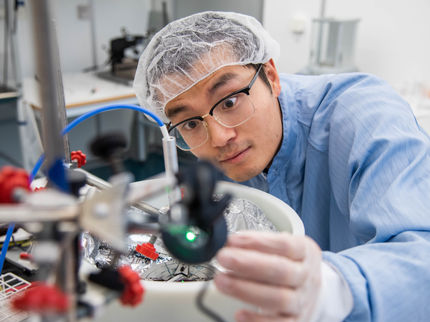New theory may lead to more efficient solar cells
Advertisement
A new theoretical model developed by professors at the University of Houston (UH) and Université de Montréal may hold the key to methods for developing better materials for solar cells.
Eric Bittner, a John and Rebecca Moores Professor of Chemistry and Physics in UH's College of Natural Sciences and Mathematics, and Carlos Silva, an associate professor at the Université de Montréal and Canada Research Chair in Organic Semiconductor Materials, say the model could lead to new solar cell materials made from improved blends of semiconducting polymers and fullerenes.
The researchers describe their findings in a paper titled "Noise-Induced Quantum Coherence Drives Photo-Carrier Generation Dynamics at Polymeric Semiconductor Heterojunctions," appearing Jan. 29 in Nature Communications, a multidisciplinary journal dedicated to publishing research in the biological, physical and chemical sciences.
"Scientists don't fully understand what is going on inside the materials that make up solar cells. We were trying to get at the fundamental photochemistry or photophysics that describes how these cells work," Bittner said.
Solar cells are made out of organic semiconductors – typically blends of materials. However, solar cells made of these materials have about 3 percent efficiency. Bittner added that the newer materials, the fullerene/polymer blends, only reach about 10 percent efficiency.
"There is a theoretical limit for the efficiency of the ideal solar cell – the Shockley-Queisser limit. The theory we published describes how we might be able to get above this theoretical limit by taking advantage of quantum mechanical effects," Bittner said. "By understanding these effects and making use of them in the design of a solar cell, we believe you can improve efficiency."
Silva added, "In polymeric semiconductors, where plastics form the active layer of solar cells, the electronic structure of the material is intimately correlated with the vibrational motion within the polymer chain. Quantum-mechanical effects due to such vibrational-electron coupling give rise to a plethora of interesting physical processes that can be controlled to optimize solar cell efficiencies by designing materials that best exploit them."
The idea for the model was born while Bittner was a Fulbright Canada Scholar and visiting professor at the Université de Montréal collaborating with Silva, an expert in the field of ultrafast laser spectroscopy and organic semiconductors.
Bittner says the benefit of their model is that it provides insight into what is happening in solar cell systems.
"Our theoretical model accomplishes things that you can't get from a molecular model," he said. "It is mostly a mathematical model that allows us to look at a much larger system with thousands of molecules. You can't do ordinary quantum chemistry calculations on a system of that size."
The calculations have prompted a series of new experiments by Silva's group to probe the outcomes predicted by their model.
Bittner and Silva's next steps involve collaborations with researchers who are experts in making the polymers and fabricating solar cells.

































































